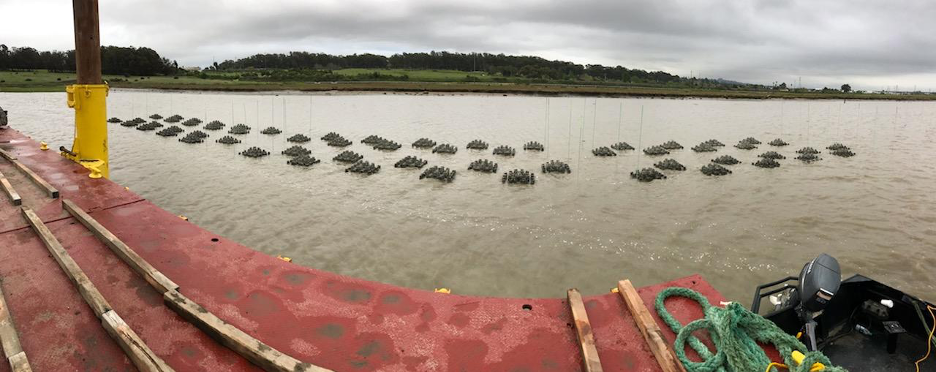The "What" and the "Why"
What are we trying to learn?
We want to know where around the Bay and in what abundances Olympia oysters, oyster drills, and rockweed are found. This information will help to guide restoration design and planning (e.g. where to focus our restoration efforts) and help us to understand the positive and negative interactions between oysters, oyster drills, and Fucus. Community scientists can help us gather this information, have a hands-on experience in ecology, learn about Bay species and ecosystems, and share their knowledge.
Why do we care about oysters, oyster drills, and Fucus?
Oysters are filter feeders, which means they have a natural ability to improve water quality. Under certain conditions, Olympia oysters grow in clusters, which together form oyster beds. The nooks and spaces created by clusters of oysters provide habitat for many small fish, crabs, and other marine creatures.
The Olympia oyster is the only oyster native to the West Coast of North America and is a part of the native ecosystem in many estuaries. They were an important food source for indigenous inhabitants for thousands of years and, though their population is greatly reduced, are still present even in the highly urbanized San Francisco Bay.
Native oysters can be incorporated into “living shorelines,” a coastal management strategy which uses native species, such as oysters, eelgrass, and various marsh plants, to reduce shoreline erosion while providing habitat for many other native plants and animal species. There are several efforts to restore Olympia oysters as part of living shorelines in the San Francisco Bay, San Diego, Newport, and Humboldt Bays. In San Francisco Bay, native eelgrass, oysters, and marsh plants are used to create these shorelines, but invasive species like the oyster drill can hinder these efforts
The Atlantic oyster drill is native to the East Coast of the United States and was unintentionally introduced to San Francisco Bay in the late 1800’s in shipments of live oysters for oyster farms. Atlantic oyster drills have persisted for over a century and their populations are now scattered throughout the Bay.
Efforts to restore or enhance Olympia oyster populations on the West Coast began in Puget Sound in 1999. Projects to restore oysters have occurred or are in progress at 40 locations along the West Coast from Southern California to British Columbia. Challenges facing oyster restoration vary from place to place, but common issues include invasive species, sedimentation, estuarine acidification, and hypoxia.

